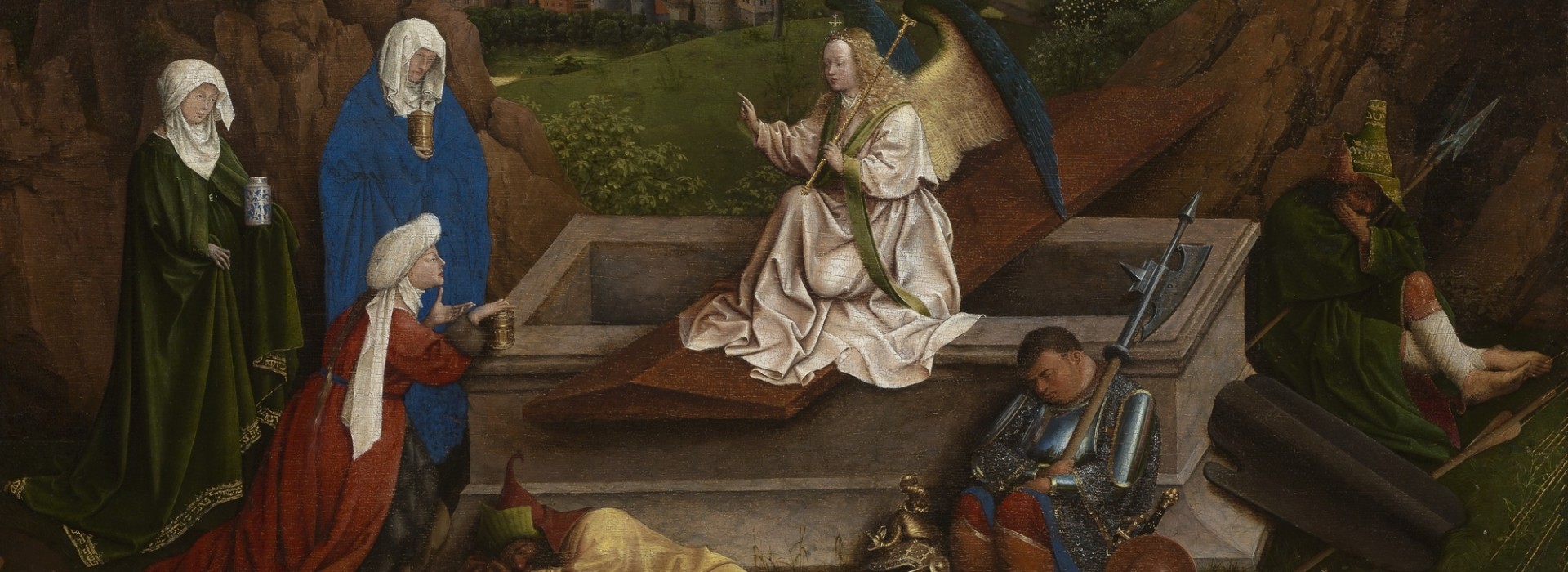'The Three Marys at the Tomb is now one of the jewels in the museum’s collection. The representation of light and shadow and the beautiful landscape show what a revolution Van Eyck brought about in painting at the beginning of the fifteenth century. It is not for nothing that the panel has been called the most important fifteenth-century Flemish painting in the Netherlands.’ Curator Friso Lammertse
Fragile
The Three Marys at the Tomb (1425-1435) is a rare and fragile panel that, because of its great importance, has never left the museum. The painting was conserved in 2012 and can now be loaned on an exceptional basis. Only twenty works by the Flemish master have survived. The exhibition Van Eyck: An Optical Revolution in Ghent brings together works from all over the world, including Portrait of a Man with a Blue Chaperon (c.1428-30) from Romania and The Annunciation Diptych (c.1433-35) from Spain.



